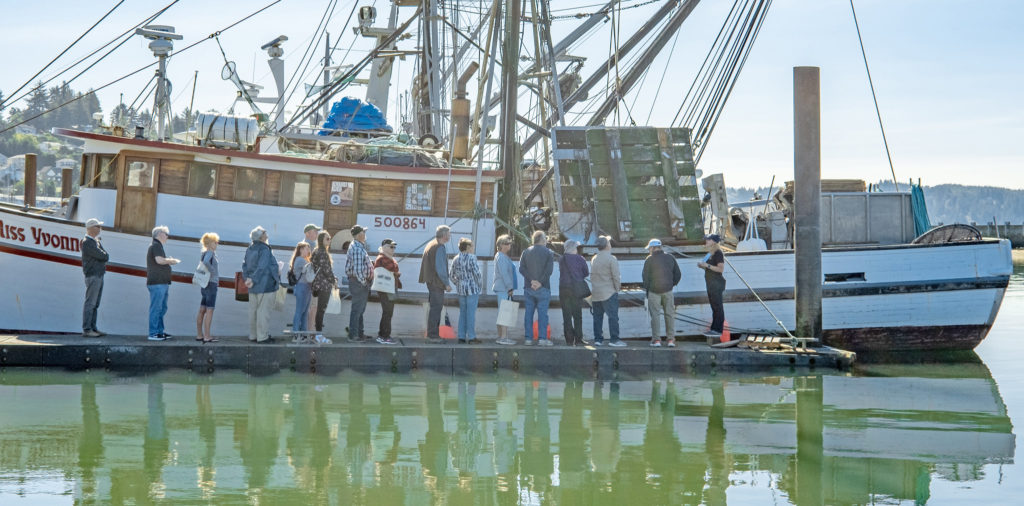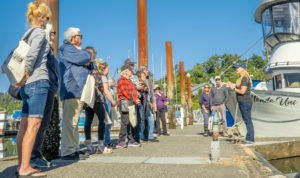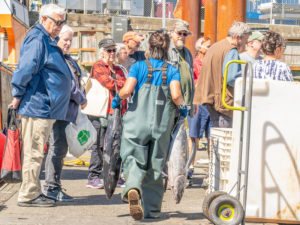
By DANA TIMS/YachatsNews.com
Tuna making their annual appearance in Oregon’s coastal waters mean just one thing – that consumers will be flocking to the docks in Newport to both learn about these strong, athletic fish and buy them directly from the boats.
Starting Friday and continuing every Friday through Aug. 19, Shop the Dock Tours will provide in-depth information about one of the state’s most lucrative fisheries.
And while purchasing a whole tuna from participating boats isn’t required, plenty of folks will show up with their own coolers to take one home.
“It’s really a much broader education program than just showing up and buying fresh albacore,” said Angee Doerr, who helps lead the tours at the Port of Newport’s Dock 5. “But it’s also a great opportunity to meet and talk with some of the people who make up our industry here.”

This year marks the 10th anniversary of a program that is tailored around the expected five-week presence of juvenile albacore tuna off Oregon’s coast. The effort is run by Oregon State University’s extension and Sea Grant programs.
No reservations are needed to take the tours, which are filled on a first-come, first serviced basis. The tours last from 60 to 90 minutes and begin Fridays at 9:30 a.m., 10 a.m. and 10:30 a.m.
“If it’s a large group, I’m asking people to let me know so we can increase staffing if we need to,” Doerr said. She can be reached for questions at angee.doerr@oregonstate.edu or by calling 541-648-6816.
Tour-takers will learn, among other things, that the tuna just now starting to show up off the coast are midway through an ocean-wide migration that starts near Japan, going south and then up the West Coast to Vancouver Island before heading back to Asia.
The distances vessels have to travel depend on ocean temperatures since tuna prefer water about 65 degrees.
In some years that means commercial boats – some from as far away as San Diego — must travel as far as 30 or 40 miles offshore. In others, warmer temperatures closer to shore lure the tuna close enough that recreational boats can easily reach them.

“There is always a lot of speculation just where the tuna will be,” said Nancy Fitzpatrick, the recently retired executive director of the Oregon Albacore Commission. “There is a lot of historical knowledge based on past fishing, but boats also have a wealth of scientific data they can tap into to make their best guesses.”
One significant factor affecting this year’s catch is rapidly rising fuel prices, she said. In past years many boats could afford to motor out and, based on speculation, see what they could stumble onto.
“But fuel costs are so high now,” she added, “that it’s going to be very difficult and very expensive to do that.”
The tuna caught off Oregon are juveniles, usually about four to five years into their decade-long life span, Doerr said.
She noted that Oregon’s entire catch is “hook and line,” meaning that each fish is caught using one pole dragging a plastic lure through the water. No trawling nets are used. The athleticism of the fish means that hydraulic reels are usually employed to get them aboard, where they are quickly cooled with ice to preserve their meat.
“It’s a very exciting type of fishing,” Doerr said. “And these tours are such a fun way to explain it all for people who attend.”


